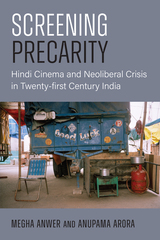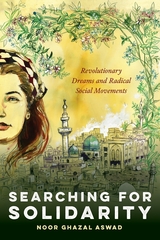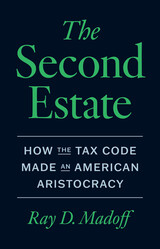5 books about Zunz, Olivier
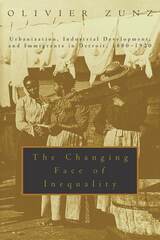
The Changing Face of Inequality
Urbanization, Industrial Development, and Immigrants in Detroit, 1880-1920
Olivier Zunz
University of Chicago Press, 1983
Originally published in 1983, The Changing Face of Inequality is the first systematic social history of a major American city undergoing industrialization. Zunz examines Detroit's evolution between 1880 and 1920 and discovers the ways in which ethnic and class relations profoundly altered its urban scene. Stunning in scope, this work makes a major contribution to our understanding of twentieth-century cities.
[more]
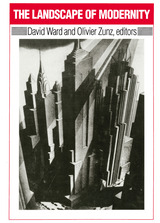
Landscape of Modernity
Essays on New York City, 1900-1940
David Ward
Russell Sage Foundation, 1992
New York City stands as the first expression of the modern city, a mosaic of disparate neighborhoods born in 1898 with the amalgamation of the five boroughs and shaped by the passions of developers and regulators, architects and engineers, politicians and reformers, immigrant entrepreneurs and corporate builders. Through their labor, their ideals, and their often fierce battles, the physical and social dimensions—the landscape—of the modern city were forged. The original essays in The Landscape of Modernity tell the compelling story of the growth of New York City from 1900 to 1940, from the beginnings of its skyscraper skyline to the expanding reaches of suburbanization. At the beginning of the century, New York City was already one of the world's leading corporate and commercial centers. The Zoning Ordinance of 1916, initially proposed by Fifth Avenue merchants as a means of halting the uptown spread of the garment industry, became the nation's first comprehensive zoning law and the proving ground for a new occupation—the urban planner. During the 1920s, frenzied development created a vertical metamorphosis in Manhattan's booming business district, culminating in its most spectacularly modern icon, the Empire State Building. The city also spread laterally, with the controversial development of subway systems and the creation of the powerful Port of New York Authority, whose new bridges and tunnels decentralized the population and industry of New York. New York's older ethnic enclaves were irrevocably altered by this new urban landscape: the Lower East Side's Jewish community was nearly dismantled by the flight of the garment industry and the attractiveness of new suburbs, while Little Italy fought government forces eager to homogenize commercial use of the streets by eliminating the traditional pushcart peddlers. Illustrated with striking photographs and maps, The Landscape of Modernity links important scenes of growth and development to the larger political, economic, social, and cultural processes of the early twentieth century.
[more]
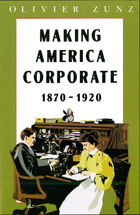
Making America Corporate, 1870-1920
Olivier Zunz
University of Chicago Press, 1992
In this groundbreaking study, Oliver Zunz examines how the growth of corporations changed
[more]
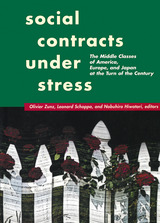
Social Contracts Under Stress
The Middle Classes of America, Europe, and Japan at the Turn of the Century
Olivier Zunz
Russell Sage Foundation, 2002
The years following World War II saw a huge expansion of the middle classes in the world's industrialized nations, with a significant part of the working class becoming absorbed into the middle class. Although never explicitly formalized, it was as though a new social contract called for government, business, and labor to work together to ensure greater political freedom and more broadly shared economic prosperity. For the most part, they succeeded. In Social Contracts Under Stress, eighteen experts from seven countries examine this historic transformation and look ahead to assess how the middle class might fare in the face of slowing economic growth and increasing globalization. The first section of the book focuses on the differing experiences of Germany, Britain, France, the United States, and Japan as they became middle-class societies. The British working classes, for example, were slowest to consider themselves middle class, while in Japan by the 1960s, most workers had abandoned working-class identity. The French remain more fragmented among various middle classes and resist one homogenous entity. Part II presents compelling evidence that the rise of a huge middle class was far from inclusive or free of social friction. Some contributors discuss how the social contract reinforced long-standing prejudices toward minorities and women. In the United States, Ira Katznelson writes, Southern politicians used measures that should have promoted equality, such as the GI bill, to exclude blacks from full access to opportunity. In her review of gender and family models, Chiara Saraceno finds that Mediterranean countries have mobilized the power of the state to maintain a division of labor between men and women. The final section examines what effect globalization might have on the middle class. Leonard Schoppa's careful analysis of the relevant data shows how globalization has pushed "less skilled workers down and more skilled workers up out of a middle class that had for a few decades been home to both." Although Europe has resisted the rise of inequality more effectively than the United States or Japan, several contributors wonder how long that resistance can last. Social Contracts Under Stress argues convincingly that keeping the middle class open and inclusive in the face of current economic pressures will require a collective will extending across countries. This book provides an invaluable guide for assessing the issues that must be considered in such an effort.
[more]
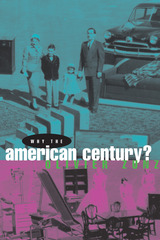
Why the American Century?
Olivier Zunz
University of Chicago Press, 1998
Reinterpreting our country's rise to world power, Olivier Zunz shows how American elites appropriated the twentieth century. Policymakers, corporate managers, engineers, scientists, and social scientists promoted a social contract of abundance and a controversial theory of pluralism. Their efforts created a model of middle class behavior for America and for the rest of the world.
"It should certainly be the task of historians to explain the nation's triumphs as effectively as they have explained its failures, and Zunz in this intelligent, learned and ambitious book suggests a valuable new model for doing so."—Alan Brinkley, Times Literary Supplement
"Zunz is evenhanded in his judgments. . . . His thesis is both imaginative and well grounded in the appropriate sources."—David M. Oshinsky, New York Times Book Review
"Zunz is an innovative and perceptive social critic. He crosses disciplinary boundaries with ease and felicity, and is particularly adept at illustrating large themes with unusual but telling details."—Kent Blaser, American Studies
"An eye-opening introduction to the shaping of modern America."—Foreign Affairs
"It should certainly be the task of historians to explain the nation's triumphs as effectively as they have explained its failures, and Zunz in this intelligent, learned and ambitious book suggests a valuable new model for doing so."—Alan Brinkley, Times Literary Supplement
"Zunz is evenhanded in his judgments. . . . His thesis is both imaginative and well grounded in the appropriate sources."—David M. Oshinsky, New York Times Book Review
"Zunz is an innovative and perceptive social critic. He crosses disciplinary boundaries with ease and felicity, and is particularly adept at illustrating large themes with unusual but telling details."—Kent Blaser, American Studies
"An eye-opening introduction to the shaping of modern America."—Foreign Affairs
[more]
READERS
Browse our collection.
PUBLISHERS
See BiblioVault's publisher services.
STUDENT SERVICES
Files for college accessibility offices.
UChicago Accessibility Resources
home | accessibility | search | about | contact us
BiblioVault ® 2001 - 2025
The University of Chicago Press



